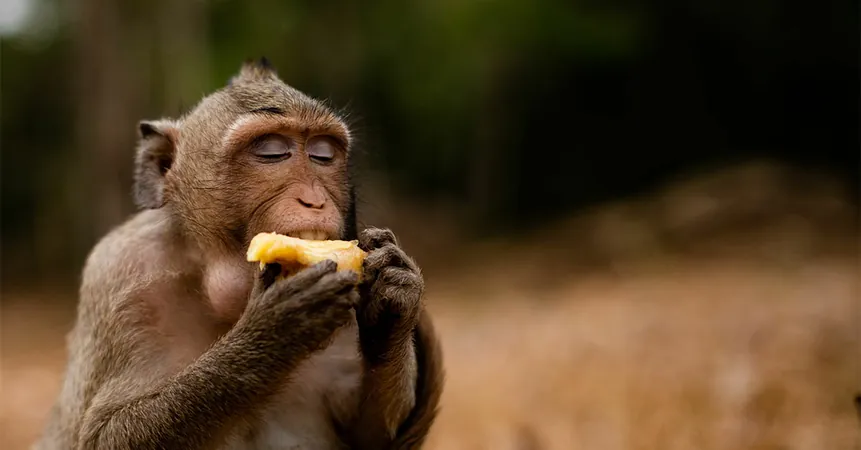
Drunk Animals: A Surprising Reality in the Wild Revealed by New Research!
2024-10-31
Author: John Tan
It's often been joked that animals can party harder than humans, and it seems those tales may have a basis in reality! From raccoons rummaging through trash to monkeys causing chaos after hitting the local liquor stash, stories of intoxicated wildlife have captured our imagination. But a groundbreaking new study reveals that getting tipsy isn't just a quirky urban phenomenon—it's likely common in the wild too!
Published in the esteemed journal "Trends in Ecology & Evolution," researchers discovered that ethanol, the intoxicating compound produced through the fermentation of fruit and grain sugars, is ubiquitous in natural habitats. This means that a variety of fruit-eating and nectar-feeding animals are likely consuming alcohol regularly while foraging for food. The research team—including notable academics like Anna Bowland, Amanda Melin, David Hosken, Kimberly Hockings, and Matthew Carrigan—highlighted that flowering and fruit-bearing plants have been a part of ecosystems for over 100 million years, suggesting that wild animals and fermenting fruit have coexisted long before humans learned to distill.
The study elaborates on how rotting fruits, when fallen from their branches, can ferment thanks to wild yeasts in the air, converting the fruit's sugar into ethanol. While most decaying fruits might contain around 1-2% alcohol by volume (ABV), researchers found some rotting palm fruits in Panama that boasted an astonishing 10% ABV! As these fermented fruits emit stronger odors than their fresh counterparts, their scent serves as a beacon, drawing animals in for a feast.
Dr. Kimberly Hockings, a behavioral ecologist at the University of Exeter, noted the significant shift in perspective: “We’re moving away from this anthropocentric view that ethanol is just something that humans use. It’s much more abundant in the natural world than we previously thought. Most animals that eat sugary fruits are consistently exposed to some level of ethanol.”
Interestingly, while humans often seek out alcohol for its intoxicating effects, many wild animals consume fermented fruits primarily for nourishment. In fact, some species have evolved physiological mechanisms that let them break down ethanol more quickly, avoiding drunkenness that could impair their survival—especially in the perilous tangle of trees or while avoiding predators.
According to Matthew Carrigan, a molecular ecology professor at the College of Central Florida, "Being inebriated while navigating treetops or dealing with nighttime predators is risky. It’s a surefire way to hinder your genetic lineage." Yet, the nuance of animal behavior introduces questions: do some animals embrace drunkenness, and could it serve a social purpose?
For certain social species, such as birds and primates, consuming ethanol may enhance social bonding. Bowland suggests that ethanol might stimulate our bodies’ endorphin and dopamine systems, leading to relaxation and potentially fostering greater social connections. However, extensive research is still required to understand these effects in wild settings.
As this study illuminates the reality of drunken animals in the wild, it raises tantalizing questions about the behaviors and evolutionary adaptations of wildlife. Stay tuned, as more adventures into the world of intoxicated animals are sure to unfold! Who knows what other wild surprises await us just beyond the treetops?


 Brasil (PT)
Brasil (PT)
 Canada (EN)
Canada (EN)
 Chile (ES)
Chile (ES)
 España (ES)
España (ES)
 France (FR)
France (FR)
 Hong Kong (EN)
Hong Kong (EN)
 Italia (IT)
Italia (IT)
 日本 (JA)
日本 (JA)
 Magyarország (HU)
Magyarország (HU)
 Norge (NO)
Norge (NO)
 Polska (PL)
Polska (PL)
 Schweiz (DE)
Schweiz (DE)
 Singapore (EN)
Singapore (EN)
 Sverige (SV)
Sverige (SV)
 Suomi (FI)
Suomi (FI)
 Türkiye (TR)
Türkiye (TR)